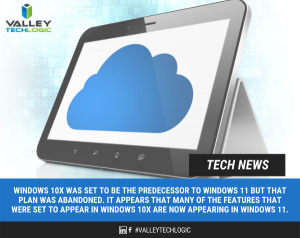
/WindowsUpdate-5afddca4a18d9e003c76ef36.jpg)
- Win10 end of life install#
- Win10 end of life update#
- Win10 end of life software#
- Win10 end of life license#
(Spoiler: Version 1703 servicing ends on Oct.
Win10 end of life update#
Support for the Anniversary Update ended on April 10, 2018.įor an up-to-date list of end-of-service dates for each Windows 10 version, see the Windows lifecycle fact sheet. That period ended for the initial release of Windows 10 on May 9, 2017. These updates are required for ongoing servicing, and Microsoft supports each feature update for 18 months.


Microsoft released the first major update, version 1511, in November 2015 the second feature update, version 1607 (the Anniversary Update) was released in summer 2016 versions 17 were released in April and October 2017, respectively. Windows 10 feature updates (the new name for what used to be full-version upgrades) are delivered via Windows Update automatically. And that’s where things become complicated. The Windows 10 support lifecycle has a five-year mainstream support phase that began on July 29, 2015, and a second five-year extended support phase that begins in 2020 and extends until October 2025.Ī note to that policy qualifies the support commitment to devices where the OEM continues to support Windows 10 on that device. The answer, as announced with the release of the new operating system in July 2015, is no. In the run-up to the release of Windows 10, many wondered whether Microsoft would take the opportunity to change its established 10-year support lifecycle. We might need a whiteboard for this one, because the story is complicated. Here’s the rundown on commitments for currently supported client versions of Windows and Office, starting with the newest member of the family. That comes on the heels of a similarly long list of products whose support ended in 2017, including Windows Vista and Office 2007. )Ī long list of Microsoft products have end-of-support dates in 2018. (For details on the differences, see the Microsoft Lifecycle Policy home page. But it’s rapidly being supplanted by products like the Windows 10 Semi-Annual Channel and Office 365 that follow the Modern Lifecycle Policy.
Win10 end of life software#
For a few more years, software sold under the Fixed Lifecycle Policy is still alive and kicking. That 10-year support lifecycle is rapidly fading away, as Microsoft moves to its “Windows as a service” and Office 365 subscription models. (For details on what each support phase means and how end-of-support dates are calculated, see the end of this post.) That assurance of support is especially important for business customers, who tend to be conservative in their approach to upgrades.įor more than a decade, the support lifecycle for each new version of Windows or Office was 10 years, with mainstream support for five years and extended support for another five years.
Win10 end of life license#
As I’ve noted before, it’s basically an agreement that the company makes with everyone who purchases a license to use its core products, Windows (desktop and server) and Office. Microsoft has a well-established support lifecycle for its software products. If that abbreviated lifecycle seems like a major change from previous versions, welcome to the “Windows as a service” era.
Win10 end of life install#
To continue receiving monthly security and quality updates, you need to install a newer feature update from the Semi-Annual Channel. If your organization is running Windows 10, Apmarks an important milestone.įor Windows 10 version 1607 (the so-called Anniversary Update), that date marks the official end-of-service date. And the deadlines for Windows 7 and Office 2010 are just around the corner. For Windows 10, the support clock runs out sooner than you might expect. “Set it and forget it” is no longer an option for the software that runs your business.


 0 kommentar(er)
0 kommentar(er)
